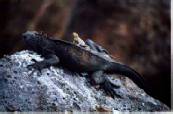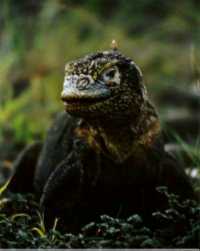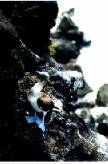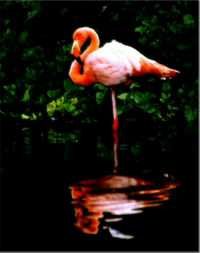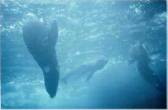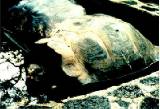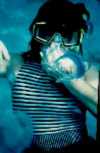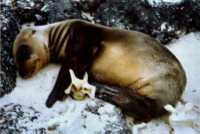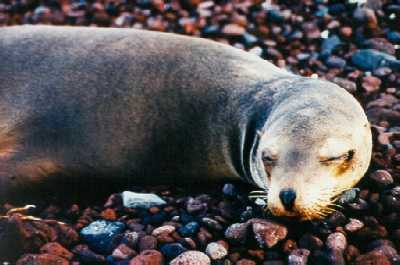|
The Galapagos Story -
Everyone's probably familiar with the Galapagos as the site of Darwin's research leading to his development of the Theory of Evolution. Why the Galapagos?
If you want a real, in depth explanation check out the Galapagos Geology Web Page or other resources. Here's a link to an Infoseek search for you here. Otherwise, here's my quick version.
The Galapagos are about 600 miles west of the coast of Ecuador. They're a fairly recent geological event - the "oldest" of the islands is about 4-5 million years old, young pups in geological time. They were formed as a "hot spot" moved under the earth's crust and burned holes through it, forming volcanoes. The Galapagos, like Hawaii, is composed of the tops of volcanoes, each a bit newer than the other.
Since they formed entirely separated from mainland (they were never connected to South America) their plant and animal life evolved somewhat separately from the rest of the world. Only life that could swim, fly, or float a long way could make it to the islands. This resulted in a few unusual effects, the most interesting are the effects on the evolution of the life that made it across.
Many of the species that made it came across with none of their natural predators. As a result, today you can literally walk over birds nesting in the trail and they do nothing but stare at you. Lizards stand like statues while you check them out, sea lions come up to play with you in the water, and you can spend the afternoon snorkeling after penguins who are much more interested in finding their next meal than in you.
Darwin in particular looked at finches. I'm not exactly sure why they're important, but I think it has to do with their breeding habits and the fact that certain differentiation's are easy to spot and track. We saw some finches too, but most of the rest of the animals on the islands were way cooler.
Cruising the Islands...
You can't be in the Galapagos on your own, period. It's part of Ecuador, and is a national park. If you want to land on one of the islands you need to have a registered Naturalist guide. "Just sailing through" is probably frowned upon but I'd bet it can be done.
Entering the Galapagos legally, you need to pay about $80 in entry fees and you need to be booked on an organized tour of some sort. We chose pretty much at random, dictated by timing and price more than anything.
The Pulsar was on the small side of the range of boats available. The captain (Patrick) and a crew of four - Luis the captain, Alehandro, Juan the cook, and Jorge - gofer. Ten passengers - myself and Patty, Janey and John (from London), Shannon (SoCal), Paul (a Seattleite), Peter and Alison (soon to be Seattlites), Emi (from Tokyo) and Elisha (from the east coast somewhere, I've forgotten.)
|


